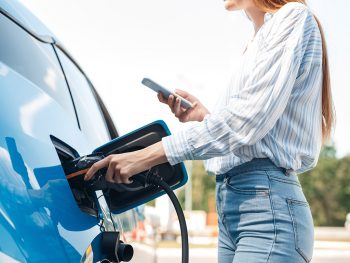Still cheaper to run an EV than a petrol or diesel car, finds Zap-Map
EV drivers can still save money on running costs compared to petrol or diesel drivers, despite increased charging prices from the energy crisis.

Zap-Map says most EV drivers can still save over £400 a year on charging costs
New analysis from Zap-Map has found that the price drivers are paying to charge an electric vehicle on the public network has increased by more than 15% overall since September 2022. But the charge point mapping service also reveals that most EV drivers can still save over £400 a year on charging costs.
Its analysis takes into account more than 500,000 charging sessions per month, across approximately 70% of the charge points in the UK – and shows the price of charging varies substantially across different types of chargers. But by using a mix of different charging options, drivers can still save money compared to refuelling a petrol or diesel car – while also benefiting from other cost savings associated with electric cars, such as lower maintenance costs, current Vehicle Excise Duty (VED) exemption and lower rates of company car tax.
The findings show that, in December 2022, the average weighted price of charging at a slow or fast charger – mostly found on residential streets or at destinations such as supermarkets or car parks – was 49p/kWh in the UK.
Meanwhile, the price for a rapid or ultra-rapid charge point, typically used for high-speed, en-route charging, was 73p/kWh.
This means that prices for slow/fast charge points were up 17%, from 42p/kWh in September 2022. Prices for rapid/ultra-rapid chargers were up 14% in the same period, from 64p/kWh.
Zap-Map’s Price Index, which covers a range of charging scenarios, also reveals EV drivers save on costs versus an ICE vehicle in all situations.
For instance, a driver charging at home 80% of the time would save around £550 per year versus an ICE car. Meanwhile, a driver charging at home 50% of the time and splitting their public charging equally across slow/fast and rapid/ultra-rapid options would save £400 per and year.
A driver charging solely on the public network using a combination of slow/fast and rapid/ultra-rapid charging would save around £230 per year.
It is due to this difference in costs that Zap-Map chose last year to support the FairCharge campaign, which aims to bring the VAT rate on public charging in line with the VAT rate on domestic energy. This move would bring down costs for EV drivers without access to a home charger.
At present, the majority of EV drivers are able to charge at home. According to Zap-Map’s latest EV Charging Survey – which saw responses from more than 4,300 EV drivers across the UK – 84% of respondents have access to a home charger. However, as more and more drivers make the switch to electric, the proportion of drivers without access to a home charger will only increase.
Melanie Shufflebotham, co-founder & COO at Zap-Map, said: “Drivers are increasingly making the switch to electric, as December’s record electric car sales go to show.
“This means the so-called ‘pavement tax’ issue will only grow in significance over the next few years, and that’s why Zap-Map is one of a number of organisations backing the FairCharge campaign. This campaign aims to bring the VAT rate on public charging in line with the VAT rate on domestic energy, and so bring down costs for EV drivers without access to a home charger.”

